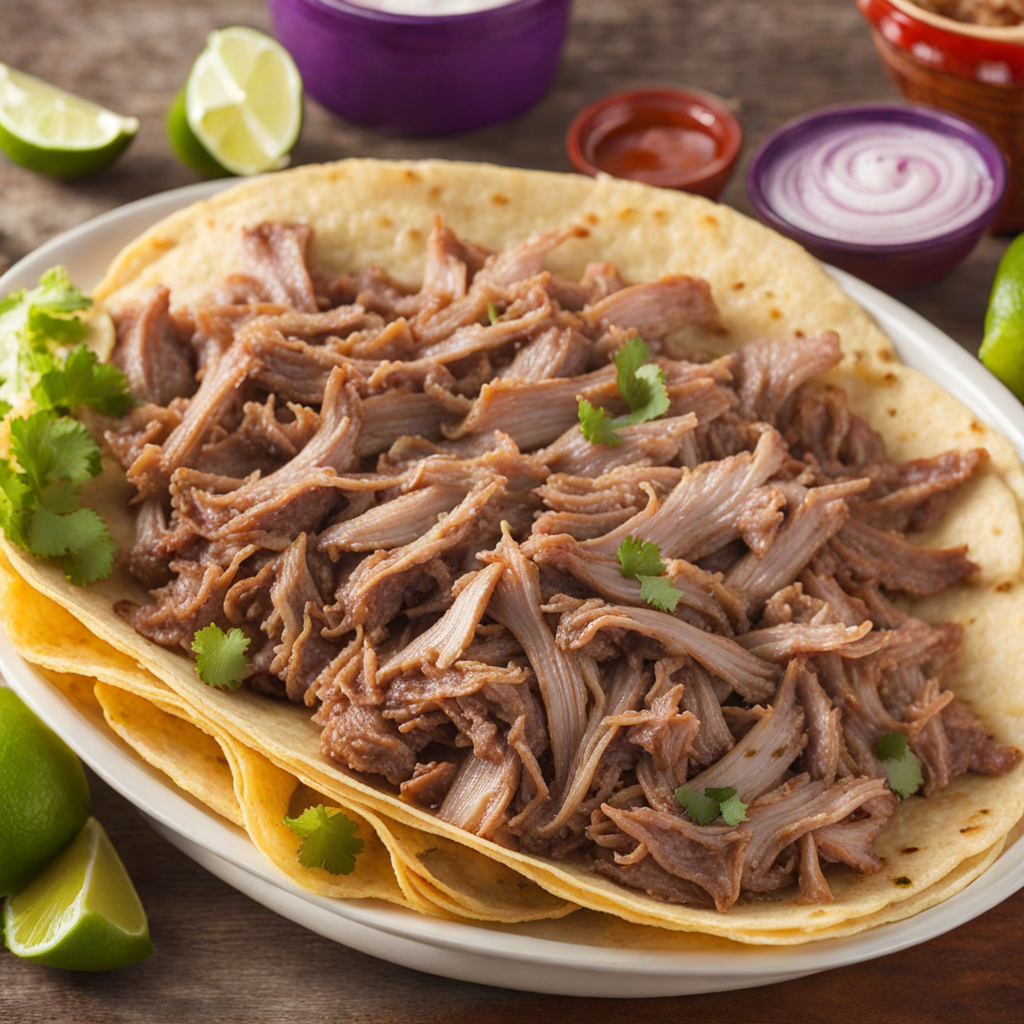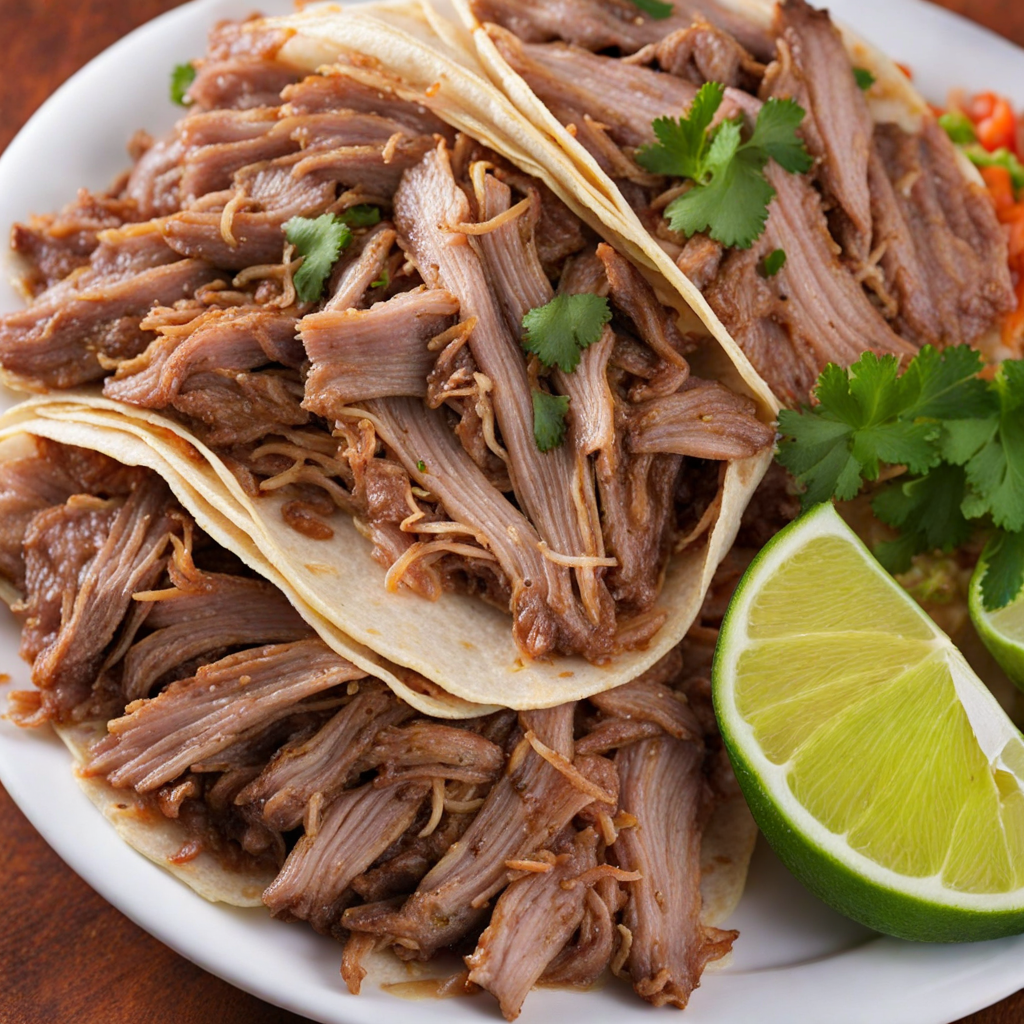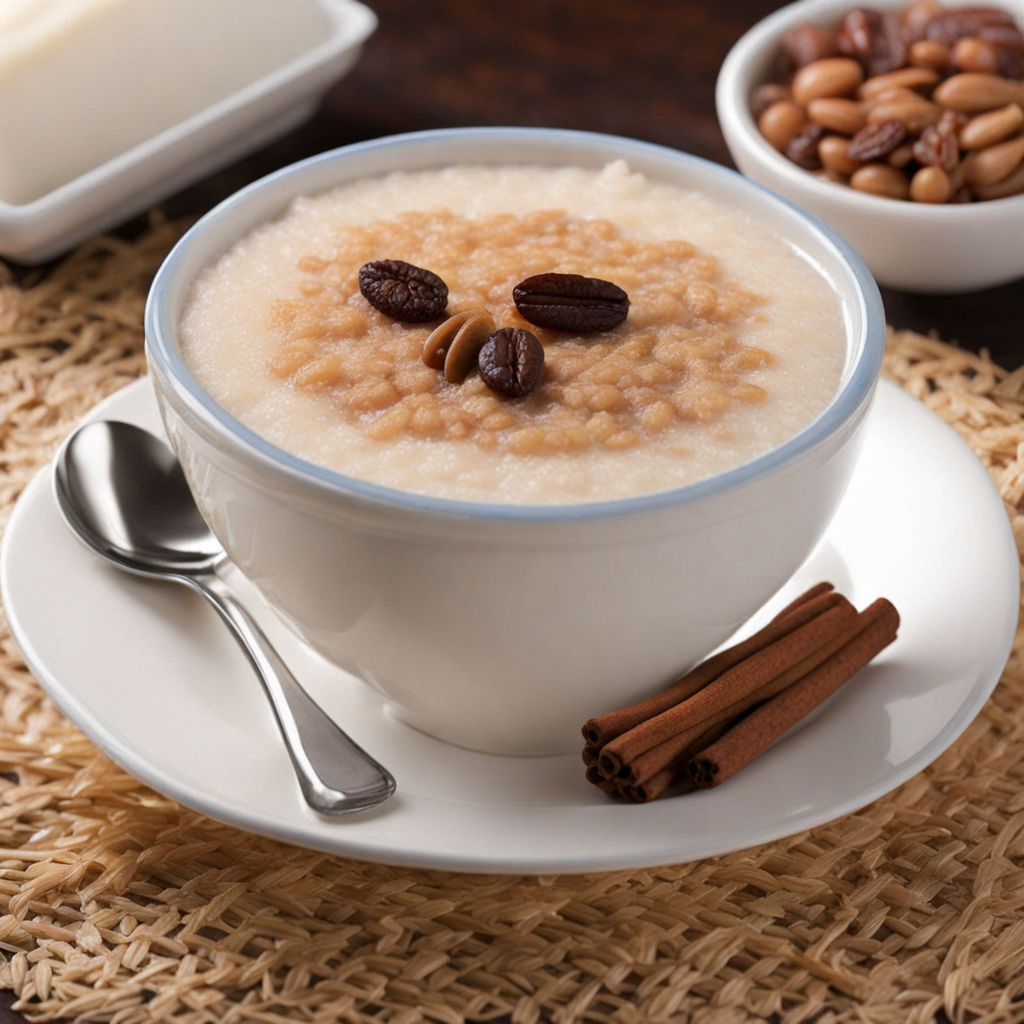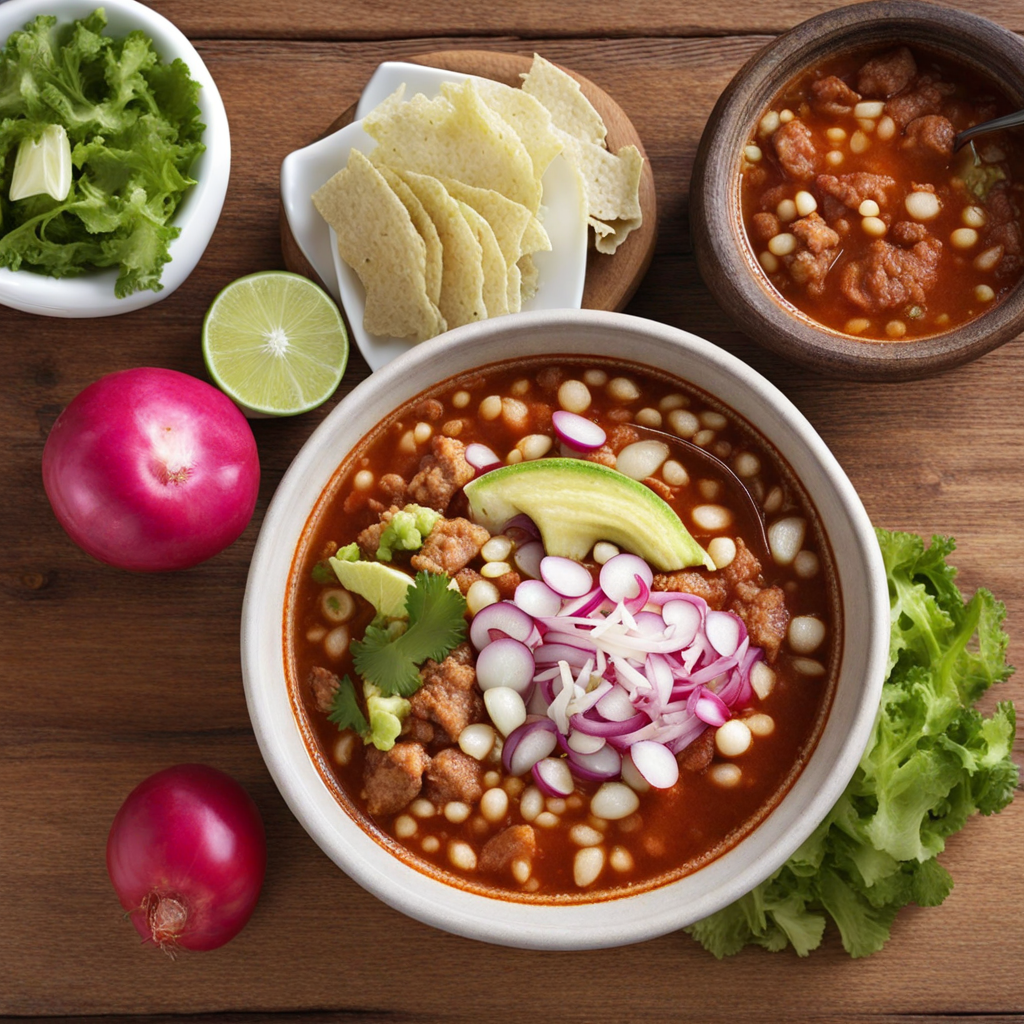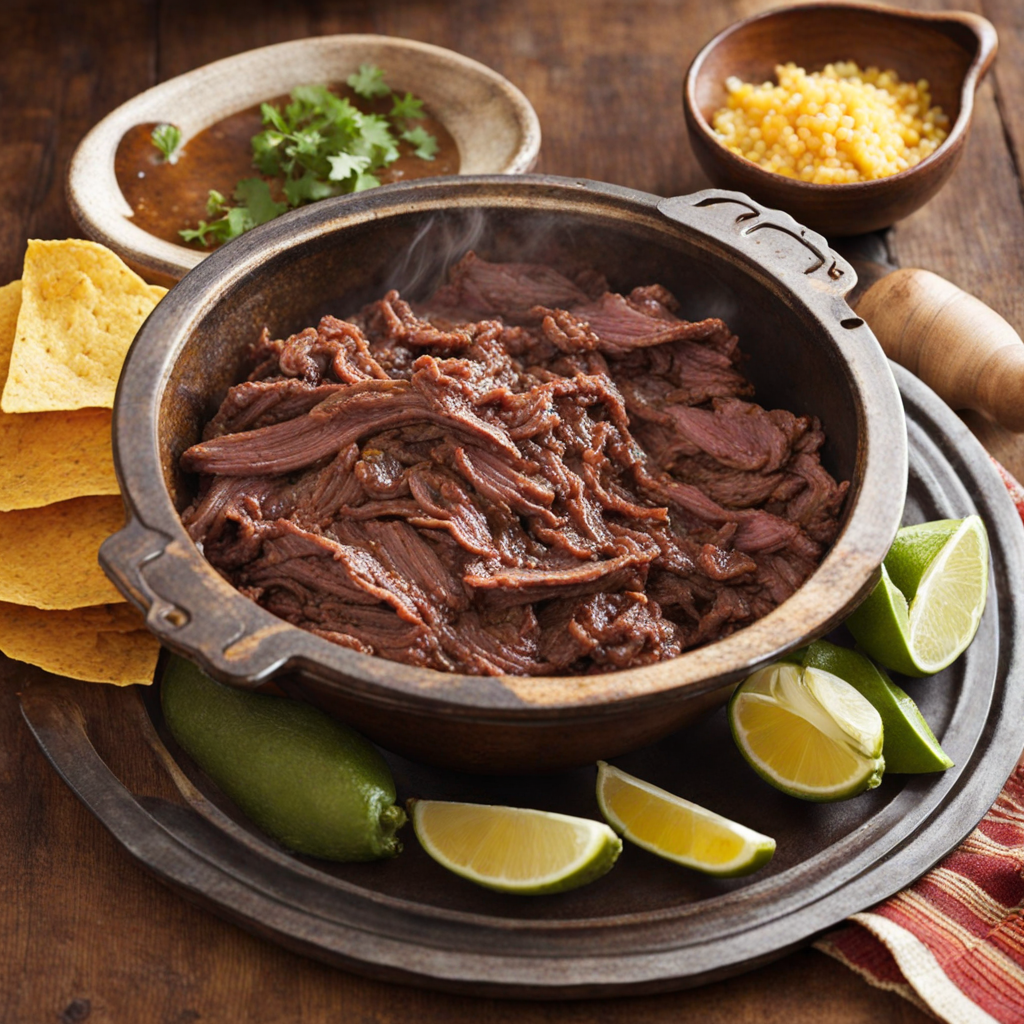Carnitas
Carnitas is a traditional Mexican dish that features tender, flavorful pork that has been slow-cooked until it's melt-in-your-mouth delicious. The name "carnitas" translates to "little meats," which is quite fitting as the pork is typically cut into small pieces or shredded after cooking. The preparation involves braising the pork in its own fat, along with seasonings such as cumin, garlic, and citrus, which infuse the meat with a rich, savory flavor. The result is a succulent filling that can be used in a variety of dishes, from tacos to burritos, or simply enjoyed on its own with a squeeze of lime and some fresh cilantro. One of the most delightful aspects of carnitas is the texture. The slow cooking process allows the meat to become incredibly tender while also creating crispy, caramelized edges that add a satisfying crunch. When served, the carnitas are often accompanied by traditional toppings such as diced onions, fresh cilantro, and a variety of salsas that can range from smoky to spicy. This combination of textures and flavors makes each bite a unique experience, inviting you to savor the complexity of the dish. Carnitas are not just a meal; they represent a rich culinary tradition in Mexico. Often enjoyed during celebrations or family gatherings, this dish brings people together around the table. Whether you choose to wrap it in a warm tortilla, pile it onto rice, or enjoy it alongside beans and guacamole, carnitas offers a taste of authentic Mexican cuisine that is both comforting and full of character. The balance of spices and the versatility of the dish make it a delightful choice for anyone looking to explore new flavors and enjoy the heartwarming essence of Mexican cooking.
How It Became This Dish
The History of Carnitas: A Culinary Treasure of Mexico Carnitas, a dish beloved by many, holds a special place in the hearts of Mexican cuisine enthusiasts and food historians alike. This delectable creation, made from tender, slow-cooked pork, has a rich history that intertwines with the cultural fabric of Mexico. Its origins, preparation methods, and cultural significance reflect the diverse influences that have shaped Mexican culinary traditions over centuries. #### Origins of Carnitas The etymology of the word "carnitas" comes from the Spanish "carne," meaning meat. The dish is believed to have originated in the state of Michoacán, located in west-central Mexico. The region's lush landscape, abundant with resources, provided the ideal environment for raising pigs, which soon became a staple in local diets. Although the exact timeline of carnitas' creation is difficult to pinpoint, it is widely accepted that the dish dates back to the pre-Columbian era, influenced by indigenous cooking practices. Long before the arrival of the Spanish in the early 16th century, the Purépecha people, who inhabited Michoacán, had developed a sophisticated agricultural system. They raised pigs, which were introduced by Spanish colonizers in the 1500s, and began to incorporate them into their traditional foods. The process of cooking pork in a manner similar to modern carnitas likely evolved from indigenous techniques, where meats were slow-cooked or roasted over an open flame. #### Traditional Preparation Techniques The traditional preparation of carnitas is a labor of love, involving a slow-cooking process that results in tender, flavorful meat. The most classic method involves cutting the pork into large chunks, seasoning it with salt, and cooking it in its own fat, often accompanied by herbs and spices like bay leaves, garlic, and orange peel. The cooking takes place in a large pot or "cazo," allowing the meat to simmer gently until it becomes fall-apart tender. As the fat renders, the pork caramelizes, creating a crispy, golden exterior that contrasts beautifully with the succulent interior. This dual texture is one of carnitas' defining characteristics, making it a favorite for tacos, burritos, and other Mexican dishes. In some regions, different cuts of pork are preferred, with shoulder and belly being popular choices, while others may use a combination of meats to achieve a more complex flavor profile. #### Cultural Significance Carnitas is more than just a dish; it represents a rich cultural heritage and a connection to family and community. In Michoacán, carnitas are often prepared for special occasions and gatherings, such as weddings, birthdays, and festivals. The communal aspect of sharing food is deeply embedded in Mexican culture, and carnitas serve as a centerpiece for many celebrations. The dish also highlights the importance of family recipes passed down through generations. Each family may have its own secret blend of spices or cooking techniques, making every batch of carnitas unique. The act of preparing carnitas can bring families together, fostering a sense of tradition and continuity. Moreover, carnitas symbolize the fusion of indigenous and Spanish culinary elements, reflecting the broader history of Mexican cuisine. The melding of these two influences has allowed carnitas to evolve while retaining its roots. The dish embodies the adaptability of Mexican food, which has continually transformed over time, influenced by regional ingredients and varying cooking styles. #### Development Over Time As Mexico's culinary landscape evolved, so too did carnitas. The 19th century saw an increase in the popularity of carnitas beyond Michoacán, as trade routes opened and migration patterns shifted. The dish spread to other regions of Mexico, where local variations emerged. For instance, in northern states, carnitas may be served with a different set of condiments or paired with more robust salsas, while in coastal regions, seafood influences may creep into the accompanying dishes. The 20th century marked a significant turning point for carnitas, particularly with the rise of the taquería (taco shop) culture. As urban centers grew, so did the demand for accessible, delicious street food. Carnitas became a staple in taquerías across Mexico, celebrated for its affordability and flavor. Vendors honed their skills, creating signature styles that catered to local tastes, further diversifying the dish. In recent decades, the global interest in Mexican cuisine has surged, with carnitas garnering attention on international menus. Chefs and home cooks alike have embraced the dish, experimenting with modern techniques and presentations while still honoring traditional methods. The rise of food trucks and casual dining establishments has also contributed to carnitas' popularity, making it a go-to choice for food enthusiasts seeking authentic flavors. #### Carnitas in the Modern Culinary Landscape Today, carnitas can be found in various forms around the world. From artisanal taco shops in Mexico City to upscale restaurants in major cities, the dish showcases the versatility and adaptability of Mexican cuisine. Some chefs have introduced innovative twists, such as braising the pork in craft beers or infusing it with international flavors, while others remain committed to preserving the time-honored techniques that have defined carnitas for centuries. In the United States, carnitas have entered the mainstream, appearing on menus from coast to coast. Fast-casual chains have popularized the dish as a staple option for tacos, burritos, and bowls. This commercialization has led to a greater appreciation for the complexities of Mexican cuisine, as more people seek to understand the cultural significance behind each bite of carnitas. #### Conclusion Carnitas is more than just a delicious pork dish; it is a symbol of Mexico's rich culinary history, a testament to the fusion of cultures, and a celebration of family and tradition. Its evolution over time encapsulates the resilience and adaptability of Mexican cuisine, making it a beloved dish both in its homeland and abroad. As people continue to enjoy and explore carnitas, they partake in a culinary journey that honors the past while embracing the future—a true representation of the vibrant spirit of Mexico.
You may like
Discover local flavors from Mexico


